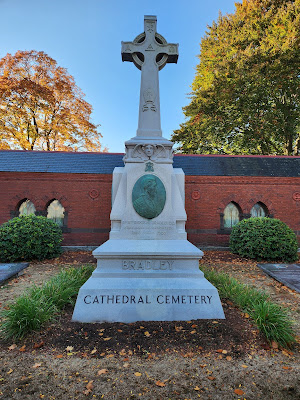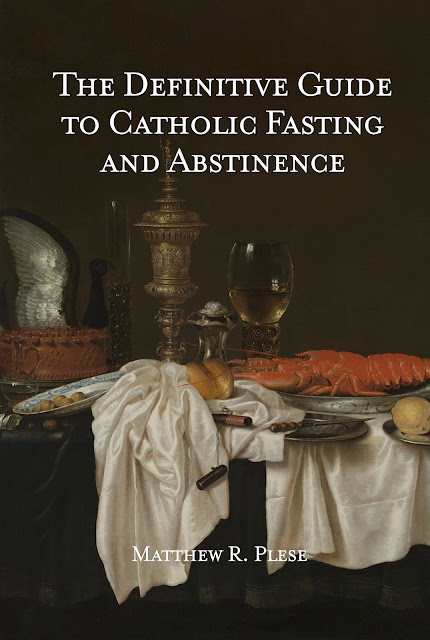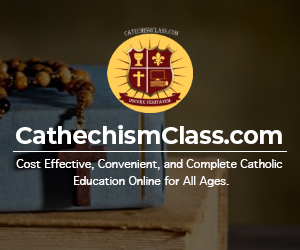Father Michael Mueller (1825–1899) was a Redemptorist priest and a prolific Catholic author of the 19th century. Born on September 12, 1825, in Germany, he emigrated to the United States where he joined the Redemptorist Order and was ordained a priest in 1859. Father Michael Mueller is best known for his Theology and devotional works. One of his most famous books is on the Holy Sacrifice of the Mass as the core of the Christian religion. First published in 1874 by Fr. Puster under the title The Holy Mass—The Sacrifice for the Living and the Dead: The Clean Oblation Offered Up Among the Nations from the Rising to the Setting of the Sun, it was republished in 1884 by Benziger Brothers, Fr. Puster & Co., and B. Herder as (The) Holy Sacrifice of the Mass. This masterpiece was re-typeset and edited in 2023 by TAN Books.
The Moment God Became Man
While we are right to view the Holy Sacrifice of the Mass as the re-presentation of the Sacrifice of Christ on the Cross, Father Mueller demonstrates how the Mass contains and renews all aspects of the adorable life of our Lord. In the Sacrifice of the Mass we can assert that the whole of Christ’s life on earth from His conception in the womb of the Blessed Virgin Mary to His Ascension into Heaven is contained in the Eucharistic Host. Father Michael Mueller therefore begins a chapter-by-chapter demonstration and meditation on his principle by considering the Mass as a renewal of every aspect of Christ’s life. Accordingly, he opens the thirteenth chapter of “The Holy Sacrifice of the Mass” by providing a meditation on the beginning of the early life of our Blessed Savior:
“Let us picture to our minds that little house of Nazareth and the room in which Mary is praying, all alone, at the time of the Annunciation of the Incarnation of the Son of God. We gaze on her in silence; we think of her purity, her lowliness, of the graces which adorn her soul and make her a living temple of God. Suddenly, there steals through the open casement a ray of soft light; it shines around this sweet Virgin, growing brighter and brighter the longer it shines. She raises her head and sees standing before her the beautiful form of one of God's angels. His silvery voice breaks the solemn stillness. He announces the glad tidings that she is to be the Mother of God: ‘The Holy Ghost shall come upon thee, and the power of the Most High shall overshadow thee; and, therefore, the Holy which shall be born of thee shall be called the Son of God.’ The Blessed Virgin, having thus learned that she was to become the Mother of the Son of God by the omnipotent power of the Holy Ghost, bowed to the divine decree and said: ‘Fiat mihi secundum verbum tuum’ – ‘Be it done to me according to thy word.’”
He immediately continues by acknowledging this as the moment of the Incarnation of God:
“No sooner had she uttered those words than the Holy Ghost formed of her purest blood a perfectly organized body. The sacred soul of Jesus Christ was at the same moment created and united to that body, and the Divine Word Himself, with both body and soul, in unity of person, so that God became man, and man was made God: ‘Et Verbum caro factus est’ – ‘And the Word was made flesh.’”
The Altar and the Incarnation
After having painted the poignant scene of the Annunciation, Father Mueller next connects the Incarnation with the Consecration at Holy Mass in a way that is sure to aid every Catholic’s soul:
“Now turn for a moment to the Catholic altar. The holy Sacrifice of the Mass is being offered up. The bell has given the signal that the most solemn and awful moment of consecration is at hand. As yet, there is only bread in the hand of the priest and wine in the chalice before him. To worship these lifeless elements would be the grossest idolatry. But suddenly, amid the silence of the breathless multitude, the priest utters the divine, life-giving words of consecration; and that which was bread and wine is bread and wine no longer, but the true Body and Blood of our Lord Himself. It is that same Body that was born of the Blessed Virgin Mary, that died for us upon the cross, that was raised again to life, and that even now sits at the right hand of God the Father. In a hundred thousand Masses that may be said throughout the extent of the whole Church in the space of one hour, God works this miracle at the moment in which the priest finishes the words of consecration; so that in all these Masses, the Blood and Body of our Savior are present, and whether the consecration takes place in one spot or another, He is always the same.
“Now, in this mystery, the power of creation appears as much as in the mystery of the Incarnation. In the Incarnation, the Son of God employed His omnipotence to make Himself man; but in the Mass, the Son of God employs His omnipotence to change bread and wine into His Body and Blood. In the Incarnation, the Son of God leaves, as it were, the bosom of His Father, descends from the height of His glory into the womb of a Virgin, and conceals His Divinity in taking human nature. But in the Mass, He conceals His Divinity and Humanity under the forms of bread and wine, in order that we may eat Him. He is the same in a thousand hosts as in one. Were a thousand million to receive Him, all would receive Him whole and entire. He does what He pleases with His Body, putting it in this sacramental state and concealing it under the species, miraculously sustained by a continual miracle.”
The 5 Words of the Consecration Mirror the 5 Words of Mary's Fiat
“Five words of her humility brought the Eternal Word into her sacred womb. Five words of the power of the priest bring the same Eternal Word on our altar. If the consent which Mary gave was the conditional cause of the mystery of the Incarnation, the action of the priest, speaking in the name and in the all-powerful virtue of Jesus Christ, is the efficient cause of Transubstantiation—of the change of the bread and wine into the Body and Blood of Christ—the New Incarnation, which is but an extension of the first. And what Mary did but once, the priest does every day. While she gave to the Son of God a life of suffering, which ended by the torment on the cross, the priest renders Him present in his own hands, in a state immortal and impassible.”
Truly, just as the moment of the Incarnation was wrought in silence, the moment of transubstantiation is accomplished in silence with only the soft spoken words of the priest:
“The Eternal Word keeps silence. There was the silence of Christ in the womb of His Blessed Mother, the silence of Christ upon the Cross, and here is the silence of Christ in the Eucharist, as profound as that in the bosom of His Father. How awful is this silence of the Son of God in the Blessed Sacrament! There, under the sacramental elements, the Eternal Word dwells in silence till the end of the world. But He speaks to faithful souls in a manner that they know of, and the faithful worshippers see Him in the light of faith. Kneeling prostrate, praying in every posture of humble adoration, they witness the tears, the smiting of the breast, the inimitable, the inconceivable expression of hearts impressed with a sense of the Real Presence.”
“Hail! sacred tabernacles, where Thou, O Lord, dost descend at the voice of a mortal! Hail, mysterious altar, where faith comes to receive its immortal food. Oh! I love Thy temple; it is an island of peace in the ocean of the world, a beacon of immortality! Thou art near to hear us. Is there a tongue equal to the ecstasy of the heart? Whatever my lips may articulate, this blood which circulates, this bosom which breathes in Thee, this heart which beats and expands, these bathed eyes, this silence—all pray in me. So swell the waves at the rising of the King of day, so revolve the stars, mute with reverence and love, and Thou comprehendest their silent hymn. Ah! Lord, in like manner, comprehend me; hear what I pronounce not. Silence is the highest voice of a heart that is overpowered with Thy glory.”






.jpg)

















.jpg)






